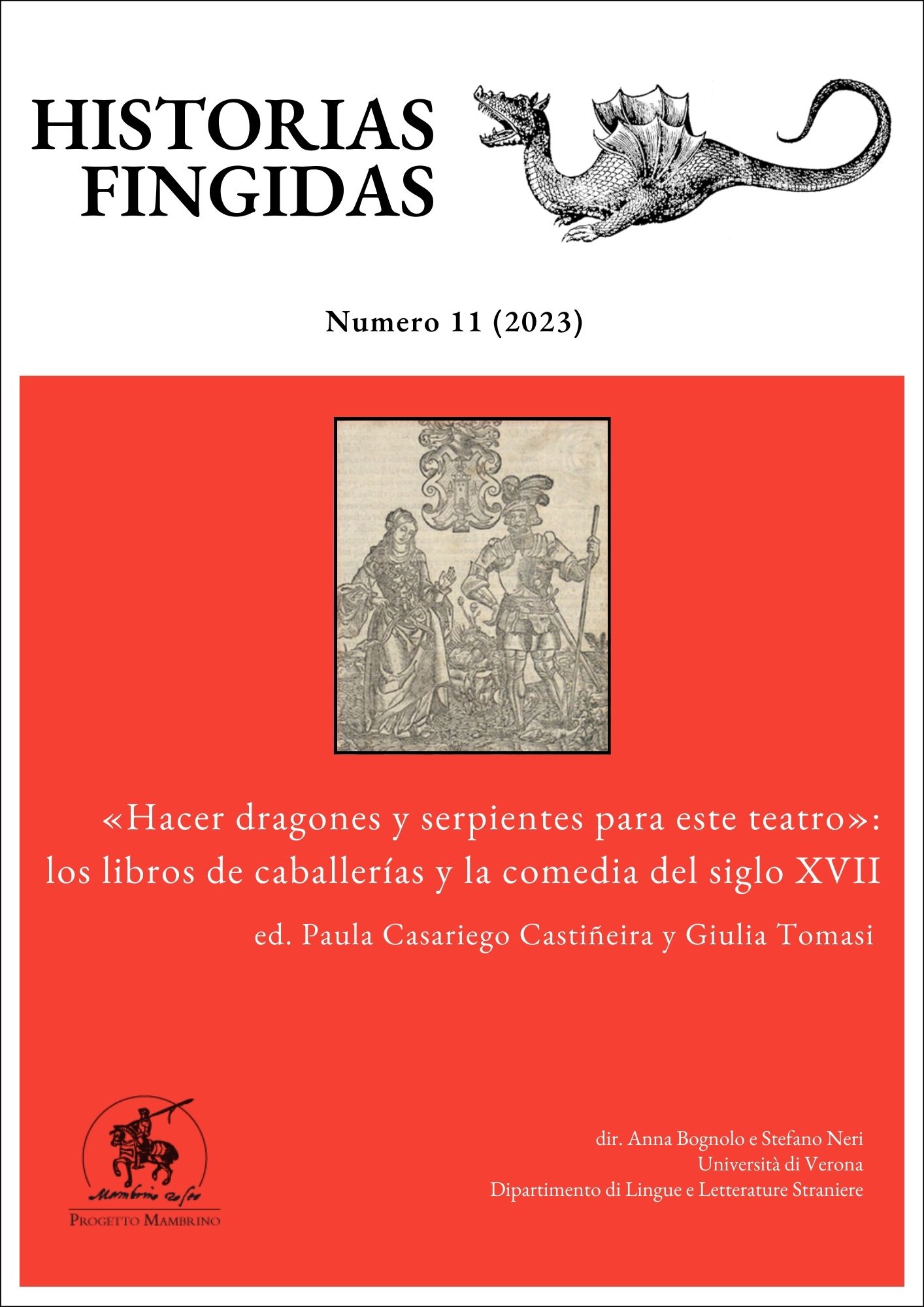Courtly scenography in chivalric comedias of Castillo Solórzano: «Los encantos de Bretaña» and «La torre de Florisbella»
DOI:
https://doi.org/10.13136/2284-2667/1397Keywords:
Alonso de Castillo Solórzano, spanish courtly theatre, 17th century, magic and chivalric theatre, staging and special effectsAbstract
In this paper I analyse the technical resources for the staging of the two chivalric comedies by Alonso de Castillo Solórzano, Los encantos de Bretaña and La torre de Florisbella, in the light of what is known today about stage design in commercial theatres, and especially in relation to the baroque court theatre that developed around the royal court from the end of the 16th century until the early years of the reign of Philip IV. This analysis shows a clear literary and aesthetic relationship between Castillo's texts and works such as La fábula de Perseo, by Lope, La gloria de Niquea, by the Count of Villamediana, Querer por solo querer, by Antonio Hurtado de Mendoza, and La vitoria de España y Francia, by Alonso Jerónimo de Salas Barbadillo. The study also highlights the literary and scenic proximity of Castillo's two plays, perhaps because they were written for the same stage and the same stage machinery, and offers further evidence to suggest that his work as a playwright must have taken place only in the context of courtly pomp, possibly commissioned by one of the lords in whose houses he served for much of his life, especially the Marquises of Los Vélez.
Downloads
Published
Issue
Section
License
Copyright (c) 2023 José Enrique López Martínez

This work is licensed under a Creative Commons Attribution-NonCommercial 4.0 International License.
Authors must attend to the following conditions:- Authors will mantain the copyright of their work and leave to the journal first publishing rights, simultaneously licensed by a Creative Common License - Attribution - No Commercial Use that permits other researchers to share the work indicating the intellectual property of the author and the first publishing in this journal not for commercial use.
- Authors can adhere to other license agreements not exclusive to the distribution of the published version of their work (for example: include it in an institutional archive or publish it in a monografic book), with the agreement of indicating that the first publishing belongs to this journal.
- Authors can disseminate their work (for example in institutional repositories or their personal website) before and during the submission procedure, as it can lead to advantageous exchanges and citations of the work (see also, The Effect of Open Access).

